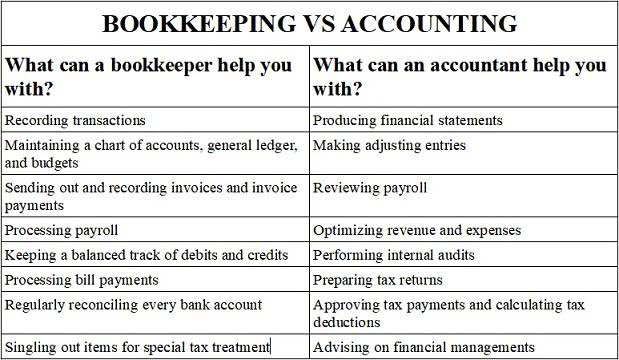FIFO Method in Accoutning : Work, Calculation & Examples

This figure is often referred to as net sales, which accounts for returns, allowances, and discounts. It forms the initial line item on an income statement, providing a measure of a company’s top-line performance. In today’s dynamic business environment, implementing an effective inventory valuation method like FIFO is essential for maintaining accurate financial records and making informed decisions.
How to Calculate Cost of Goods Sold Using FIFO
The FIFO method assumes you sell your products in the order they were produced or purchased. This approach typically results in a lower Cost of Goods Sold (COGS) and a higher gross profit compared to other inventory valuation methods. The weighted average cost method calculates COGS and ending inventory based on the average https://onlinegraphic.com/?p=375 cost of all units available for sale during the period. This method smooths out price fluctuations but may not accurately reflect the actual flow of goods.

Average Cost Method (AVCO)
Once you’ve chosen a method, stick with it for all future calculations. By using WAC, you can simplify your inventory valuation process while providing a consistent basis for financial reporting. However, be aware of its limitations during periods of significant price changes in your inventory costs. During periods of rising costs, common in inflationary environments, FIFO results in a lower COGS. This occurs because FIFO expenses the older, cheaper, inventory costs first. Consequently, a lower COGS leads to a higher reported gross profit and net income.
Advantages of Using FIFO in a Period of Rising Costs
So FIFO follows the same way of going with the natural flow of inventory. If you want to have an accurate figure about your inventory then FIFO is the better method. Accurate COGS recording is also critical for tax reporting, as it directly affects taxable income. Overstating COGS can underreport taxable income, risking penalties, while understating it could lead to overpaying taxes. Reconciling COGS with inventory records helps businesses avoid such issues and ensures accurate financial reporting.
Content Marketing Manager

The wonderful thing about FIFO is that the calculations are the same for both periodic and perpetual inventory systems because we are always taking the cost for the oldest units. Along with the best practices, come a series of common mistakes we caution you to avoid. Firstly, ignoring stock rotation can result in older inventory being overlooked. Next, inaccurate record-keeping can lead to errors in COGS calculations. It is of utmost importance that record keeping is consistent and correct.
Calculate Gross Profit
This article has provided an in-depth exploration of the FIFO method, covering its principles, implementation steps, advantages, and disadvantages. Key takeaways include the method’s alignment with actual inventory flow, its financial benefits, and the potential for higher tax liabilities. Choosing the right inventory valuation method is crucial for accurate financial reporting and efficient inventory management. While FIFO offers numerous advantages, it is essential to consider the specific needs and circumstances of your business. By carefully evaluating the benefits and drawbacks, companies can make informed decisions that support their financial health and operational efficiency.
FIFO vs. Weighted Average Cost Methods
- Notice how DIO would increase because of higher inventory and lower COGS, which is precisely what happens when we use the FIFO method during an inflationary period.
- The choice of method can depend on various factors, including the type of inventory, the industry standard, and tax considerations.
- Manufacturers benefit from FIFO by maintaining a consistent flow of raw materials and finished goods.
- Furthermore, by utilizing this method, sellers can gain greater insight into how different approaches affect sales and profits.
With LIFO, the assumption would be that you used up all of Batch B’s 200 units before dipping into Batch A for the remaining 20. Under the LIFO system, you would assume that all of these units were taken from Batch B, with Batch A left untouched. You would usually do this at the end of each accounting period — whether that’s monthly, quarterly, or annually.

How to Calculate FIFO Cost of Goods Sold Step by Step
When inventories are used up in production or are sold, their cost is transferred from the balance sheet to the income statement as the cost of goods sold. FIFO uses the First in First out method where the items gym bookkeeping made or purchased first are sold out which is why it is easy and convenient to follow and implement for companies and businesses. Businesses usually sell off the oldest items left in the inventory as they might become obsolete if not sold further.
- Ecommerce merchants can now leverage ShipBob’s WMS (the same one that powers ShipBob’s global fulfillment network) to streamline in-house inventory management and fulfillment.
- This method is ideal for businesses with unique or high-value items.
- Inventory management is a critical aspect of any business that handles physical products.
- During inflationary periods, this often means that the cost of goods sold is lower compared to other methods like LIFO.
- The remaining two guitars acquired in February and March are assumed to be unsold.
- Some of the benefits of tracking the revenue are like analysis of daily sales trends to understand if there is any particular pattern in customer behavior.
- By following these guidelines, businesses can ensure a smooth transition to FIFO and reap the benefits of this efficient inventory valuation method.
Common mistakes to avoid when calculating ending inventory

FIFO aligns the cost of goods sold with their current market value. Let’s say you bought a batch how to find sales revenue using fifo of widgets for $10 each a few months ago, but now they’re selling for $15. With FIFO, your financial reports will show that you sold those $10 widgets, giving you a clear picture of your profit. FIFO, on the other hand, is the most common inventory valuation method in most countries, accepted by International Financial Reporting Standards Foundation (IRFS) regulations.
The FIFO method gives you a way of calculating your cost of goods sold and figuring out how much the rest of your inventory is worth. Let us assume that there is a mobile manufacturing company in which the monthly sales volume has increased from 1,500 to 6,500 during the 12 months ending in November 2018. Then, the price function during each month is governed by the function (7000 – x), where ‘x’ is the number of mobiles sold during the month. Let us consider the example of a tire manufacturer, which produced 25 million tires across different vehicle segments in 20XX. Thus, it is important for every business to concentrate on sales revenue maximisation.